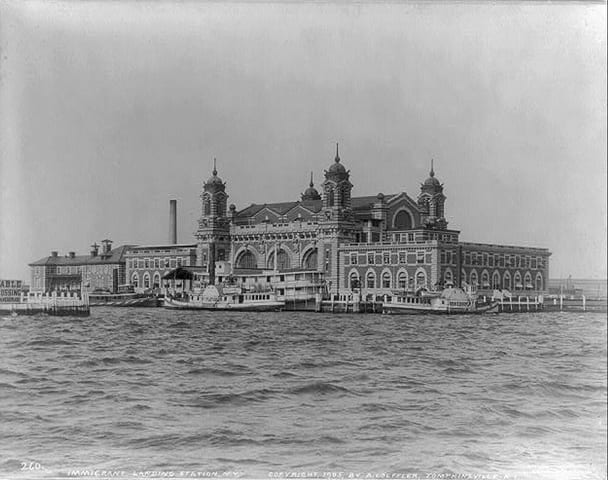Last Friday afternoon I was sitting with nine wrestling fans in a locally-owned restaurant well-known for its pizza, six pies loaded with different toppings spread out around the long table, discussing the upcoming dual meet between undefeated Penn State and the visiting team from Illinois. Oh, there might have been a few beverages there as well.
At one point the conversation turned to food (imagine that?) and the subject matter of regional dishes of central and southern Pennsylvania, including one I simply don’t understand – scrapple. It was not a part of my diet growing up and by the time I was finally introduced to it my taste buds and knowledge about the product trumped any desire to eat it. My apologies to the vegetarians reading this.
Obviously my mindset about that particular pork product is not shared by everyone but that’s what makes discussions about food so interesting – and why there’s at least one entire television network devoted to the subject. We all have our own personal taste, literally and figuratively.
Debating the deliciousness of scrapple and other delicacies of the region reminded me that the origin of much of what we eat is from our ancestors. Our parents, our grandparents, our great-grandparents, and beyond.
My paternal great-grandparents came to this country from Ukraine. My paternal great-grandmother was born in Ukraine in 1863 and emigrated to the U.S. in 1889, and my great-grandfather was born in Ukraine in 1858 and emigrated to the U.S. in 1897.
As best we can tell they changed their surname to Hook on arrival as their likely Ukrainian surname – Kryuk – translated as Hook. In addition, the original Cyrillic spelling Крюк ends in what to English eyes appears to be Hok. And so we are named “Hook.” Not to mention the approximate pronunciation of Крюк (kr-youk) could easily be confused with crook – probably not the best choice for a last name.
Once they became legal residents of this country they had one son, my paternal grandfather Edward (whose middle name I bear), who was born in 1902, the first American born-and-bred Hook. When they passed away in 1932 and 1937 they were buried in Saints Peter and Paul Cemetery in Mount Carmel and their son moved into their house with his wife and six children. The names on their orthodox-crossed gravestone are Mary and George Hook – names they died as Americans with, but were not born with.
According to the U.S. Department of Homeland Security, in 1889 when Mary came over there were 445,000 immigrants admitted to the United States for legal permanent residence. In 1897 when George arrived there were 231,000. Those years fall in a half-century-plus of relatively steady immigration to this country. Between 1847 and 1904 there was an average of 355,000 émigré’s settling in America every year. These numbers fell just below 100,000 in 1861 and 1862 (the first two years of the Civil War) and climbed to a high of more than 790,000 in 1882, but more often than not stayed within 100,000 people of the average.
Then in 1905 the number of immigrants into this country passed the 1 million mark for the first time, something it did six times over the next 10 years before declining drastically in 1915, ultimately dropping below 100,000 per year every year from 1931 – 1945 (The Great Depression through World War II).
What that 50-plus-years of steady immigration in the second half of the 1800s resulted in was between 1860 and 1920 immigrants made up right around 14 percent of the U.S. population, peaking at over 14 million people in the 1930 census. However the ensuing declines, coupled with our own baby boom, drove that number down so that by the 1970 census immigrants made up only 4.7 percent of the United States population – a third of its historical peak.
And that is the America the Baby Boom generation – my generation, the generation primarily in charge of the country right now – grew up with. Immigrants making up less than one out of every 20 people, and many of those immigrants clustered in urban areas.
From 1946 to 1988, during Baby Boomers’ childhoods and young adulthood, this country experienced the same average number of immigrants admitted to the United States for legal permanent residence as it had a century before – 366,000 a year. Except, a century before in 1847 when that steady immigration started, the entire population of the country was only 21 million people. In 1946 it was 141 million people – almost seven times what it had been in 1847. So each incremental 366,000 new immigrants was a significantly smaller percentage of the population in 1946 and beyond. And significantly less visible to the Baby Boomers.
But starting in 1989 we began experiencing a new jump in immigration – which has surpassed 1 million per year 15 times since then. The result of this new wave of immigration is that by the 2010 census immigrants made up almost 13 percent of the U.S. population – similar to their population density at the turn of the 20th century when my great-grandparents were arriving.
That is America today. And it’s a bit of a change for Baby Boomers.
Here in Happy Valley we’re not quite up-to-speed with the country as a whole on immigration demographics. In 2010 the county’s population of foreign-born persons was just 8 percent of our total. But we did beat Pennsylvania, as the state’s percentage was only 6.3 percent. Of course this pales in comparison to a state such as Florida where 19.7 percent – almost one in every five people – is an immigrant.
Which is the reality in which we live in the United States in 2017. One where eateries aren’t selling scrapple, pierogis, gnocchi, or pigs-in-a-blanket, but a variety of other worldly treats. Hmmm… I wonder if they’ve got anything that uses internal organs and entrails?



